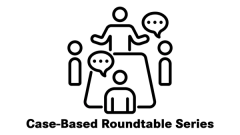
Factors for Selecting Later-Line Therapies in Advanced RCC
Chung-Han Lee, MD, PhD, discusses the most important factors in treatment selection for later-line therapy in renal cell carcinoma.
Episodes in this series

Chung-Han Lee, MD, PhD, assistant attending physician at Memorial Sloan Kettering Cancer Center, discusses the most important factors in treatment selection for later-line therapy in renal cell carcinoma (RCC).
Patients with advanced RCC generally receive a frontline tyrosine kinase inhibitor (TKI) plus immunotherapy or a dual immunotherapy combination. Later-line therapies include the options that were not used in the first line.
According to Lee, the outcome of frontline therapy can impact the choice of second and later-line therapy. Patients who respond well to a tyrosine kinase inhibitor (TKI) in the first line may also respond to other TKIs later on. Conversely, those who have significant toxicities related to a TKI may also be unable to tolerate a different TKI due to class-specific toxicities.
Patient performance is also significant since patients are most healthy and able to tolerate therapy in the first line. Tolerability becomes a greater concern when considering second- and third-line therapies due to a higher disease burden. Physicians may be challenged by the need to provide the most efficacy for patients while they also ensure that patients are able to maintain quality of life and safety during later-line treatment.
TRANSCRIPTION:
0:08 | When we talk about the second-line or later space in kidney cancer, the decision about what treatment choice to make—a lot of this is based off of how they responded in first line, and also the state of the patient after they've already progressed. For a patient who did very well with a TKI-based regimen in the first-line setting, our expectation is the effect of downstream TKIs may actually have very similar types of efficacy. For people who had a lot of toxicity to a first-line TKI, the expectation is that they may similarly experience a lot more toxicity than the typical patient to subsequent TKIs. This is based off of a class effect because most of the TKIs build upon targeting VEGF. Therefore, there are some class-specific toxicities that may result.
1:11 | The other part of it is really the patient aspect of it. Now, when we treat people in the first-line setting, it's often the case that in the first line, they are perhaps the most healthy that the patient may actually be. After they progress on first-line therapy, the overall disease burden is often higher than it was in [first-line] with subsequent lines of therapy, so their performance status may not necessarily be the same as in early lines. Therefore, we also have to take in consideration of the tolerability of various regimens and whether or not there would be good candidates for treatment that help balance that efficacy equation with the tolerability equation.

















































